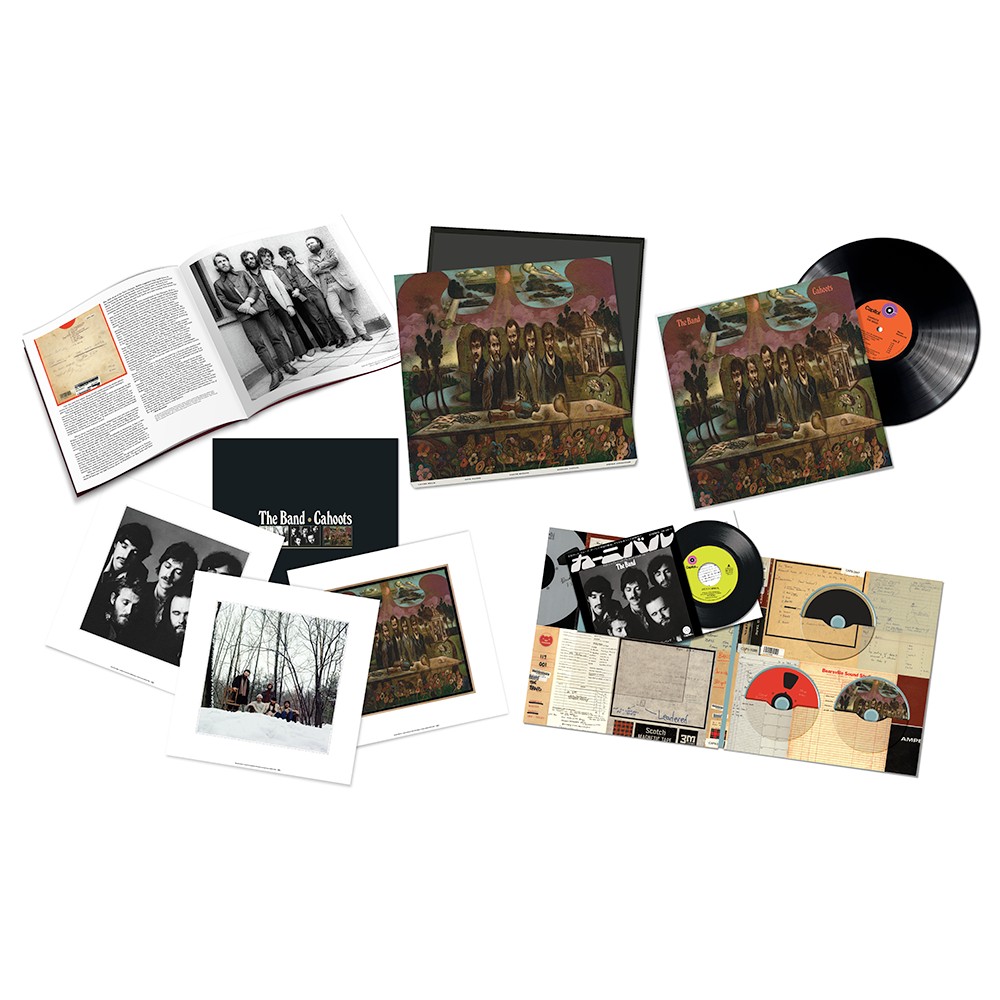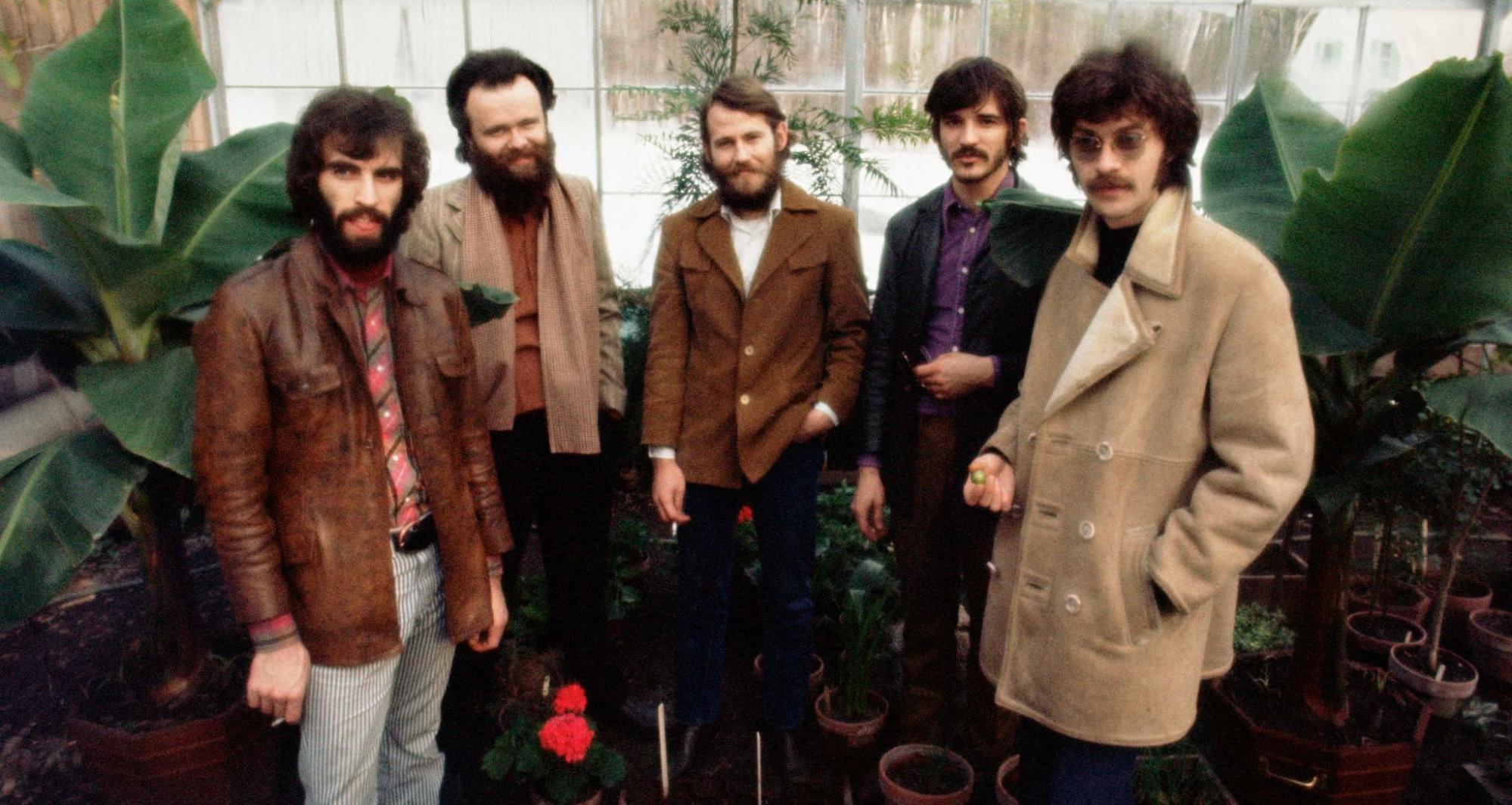Having only been familiar with hits like “The Weight” and “Up On Cripple Creek,” it’s been fascinating getting an in-depth look at The Band’s music through these extensive reissues. Following the format established for the deluxe editions of Music From Big Pink (1968), The Band (1969), and Stage Fright (1970), Cahoots (1971) features several CDs, vinyl, and an audio-only high-resolution Blu-Ray disc.
Though this deluxe set was my first exposure to the album, I did go back and listen to the original stereo mix (previously released on Super Audio CD by Mobile Fidelity back in 2009) to get a sense of how Clearmountain and Robertson had altered the sound of the album in the new mix. The differences between the two mixes are quite striking, to the point where some longtime fans may cry foul of revisionism.
The original stereo mix is rather dead-sounding to my ears, with the drums in particular appearing to lack any sort of visceral impact. Robertson attributes the dry sound of the album to studio space - Bearsville Studio in Upstate New York had just opened around the time Cahoots was being recorded - but there were already growing tensions between the band members that show in the final performance. Cahoots would ultimately prove to be The Band’s last album of original material for four years.
The remix basically takes the opposite approach, with copious amounts of reverb and delay applied to each instrument. The drum sound has been significantly altered as well, to the point where it sounds the snare may have been heavily reinforced with a triggered sample. Perhaps the most notable changes are the a capella ending to “Where Do We Go From Here?” and the reverse-reverb effect at the beginning of “Shootout In Chinatown.”
The liner notes go further in-depth regarding how the remix was approached, with Clearmountain remarking, “Sonically, it wasn’t a great recording. Robbie told me, ‘Just think of the original mixes as rough mixes. Pretty much don’t pay attention to the mixes themselves.’” Robertson notes that “...there are no rules. So, [for] every mix that we do, I want to start from scratch. I don’t even want to hear the original.”

The 5.1 surround mix drops the listener right in the center of the band, with the rear speakers utilized primarily for horns (most notably in the opening track, “Life Is A Carnival”), Robertson’s electric guitar, and Garth Hudson’s keyboards. The bulk of the rhythm section is isolated in the center speaker, while The Band’s trademark three-part harmonies are mixed left-center-right across the front stage. There are even some fun swirling effects, like the guitar solos in “Smoke Signal” gradually moving from speaker-to-speaker around the room.
For the first time in this series, Clearmountain has also created a Dolby Atmos mix of the album. The Atmos mix builds on the strong foundation of the 5.1 mix, with the ceiling speakers used to further immerse the listener. To my ears, the height channels seem to be reserved more for room ambience and space than isolated directional sounds.
Four outtakes have also been remixed in 5.1 & Atmos, including the first two attempts at “4% Pantomime,” which feature alternate lyrics. There’s also an early version of “When I Paint My Masterpiece” with a different accordion part.
Overall, I’d argue that the remix is a success. Though I’m not completely enamored with some of the mixing choices - such as the big vocal delays in the chorus of “Last Of The Blacksmiths” - there’s an exciting, almost-live feel to the remix that’s sorely lacking from the original version. If you don’t enjoy this album as much as the prior three, perhaps it’s due for a reappraisal.

